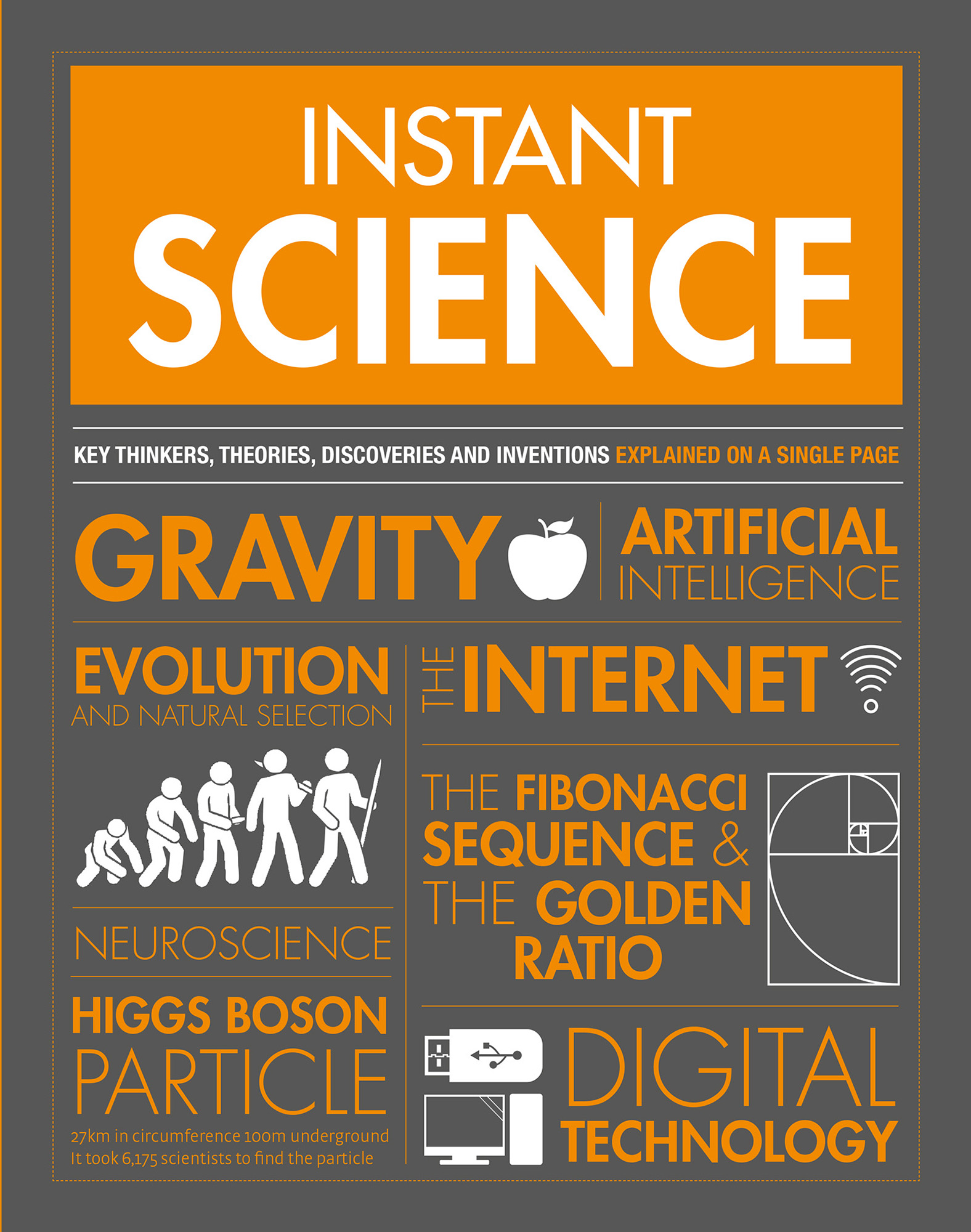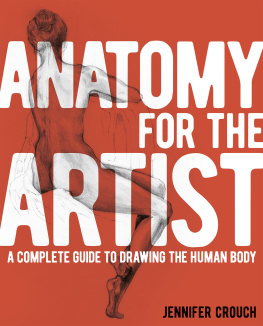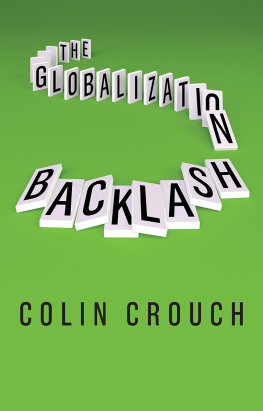Jennifer Crouch - Instant Science
Here you can read online Jennifer Crouch - Instant Science full text of the book (entire story) in english for free. Download pdf and epub, get meaning, cover and reviews about this ebook. year: 2020, publisher: Portable Press, genre: Children. Description of the work, (preface) as well as reviews are available. Best literature library LitArk.com created for fans of good reading and offers a wide selection of genres:
Romance novel
Science fiction
Adventure
Detective
Science
History
Home and family
Prose
Art
Politics
Computer
Non-fiction
Religion
Business
Children
Humor
Choose a favorite category and find really read worthwhile books. Enjoy immersion in the world of imagination, feel the emotions of the characters or learn something new for yourself, make an fascinating discovery.

- Book:Instant Science
- Author:
- Publisher:Portable Press
- Genre:
- Year:2020
- Rating:4 / 5
- Favourites:Add to favourites
- Your mark:
- 80
- 1
- 2
- 3
- 4
- 5
Instant Science: summary, description and annotation
We offer to read an annotation, description, summary or preface (depends on what the author of the book "Instant Science" wrote himself). If you haven't found the necessary information about the book — write in the comments, we will try to find it.
Instant Science — read online for free the complete book (whole text) full work
Below is the text of the book, divided by pages. System saving the place of the last page read, allows you to conveniently read the book "Instant Science" online for free, without having to search again every time where you left off. Put a bookmark, and you can go to the page where you finished reading at any time.
Font size:
Interval:
Bookmark:



Portable Press
An imprint of Printers Row Publishing Group
10350 Barnes Canyon Road, Suite 100, San Diego, CA 92121
Copyright 2019 Welbeck Non-fiction Limited
All rights reserved. No part of this publication may be reproduced, distributed, or transmitted in any form or by any means, including photocopying, recording, or other electronic or mechanical methods, without the prior written permission of the publisher, except in the case of brief quotations embodied in critical reviews and certain other noncommercial uses permitted by copyright law.
Printers Row Publishing Group is a division of Readerlink Distribution Services, LLC.
Portable Press is a registered trademark of Readerlink Distribution Services, LLC.
Correspondence regarding the content of this book should be addressed to Portable Press, Editorial Department, at the above address. Author and illustration inquiries should be addressed to Welbeck Publishing Group, 2022 Mortimer St, London W1T 3JW.
Portable Press
Publisher: Peter Norton
Associate Publisher: Ana Parker
Editor: April Graham Farr
Senior Product Manager: Kathryn C. Dalby
Produced by Welbeck Non-fiction Limited
eBook ISBN: 978-1-64517-271-0
eBook Edition: October 2020
Note: All image credits correspond to pages in the printed book.
All illustrations provided by Noun Project with the exception of Soleil Nordic/Shutterstock
Science describes the behavior of natural phenomena, such as electromagnetism and gravity, and uses the language of mathematics to articulate these descriptionsbut science is not nature itself. As physicist Niels Bohr once put it: physics is not nature; its what we can say about nature.
Science (like all knowledge) is collective and formed through collaborative human behaviors that involve methods of performing, developing, and administering scientific experiments; analyzing data; improving the accuracy of tools; and understanding measurements. Science can predict and explain the behavior of matter and is essential in the development of technology, which can be used for good or to cause harm. It is also dependent on public funding, subject to the whims of political interest and economic investment, and thus it is not neutral and does not escape society, social bias, resource-related issues, or politics.
This book presents knowledge circa 2020 and perhaps in five, ten, fifty, or one hundred years the contents of this book will need to be completely revised as new discoveries are made. The aim of this book is to summarize 160 different topics, providing short descriptions, brief histories, and explanations of scientific ideas across math, physics, chemistry, biology, medicine, ecology, geology, and technology. As each topic is limited to one page, make use of the glossary where necessary; use the units table, scientists, data sheets, and equations at the back.
Scientific knowledge and practice evolve with technology and the ever-changing design of experiments, as well as with new ways of communicating and collaborating. The scientific method formulates hypotheses that are developed into theories. A theory in the context of science is very different from the everyday use of the word theory: a scientific theory has a lot of evidence supporting iti.e., the theory of electromagnetic induction, or relativity, or evolution.
Theories become accepted through repeatable observations drawn from experimental and measurement-based testing, which different groups of scientists seek to falsify (prove false) in order to avoid biases. The more we discover and the more precise technology gets, the more our theories can be challenged. The theories that are extensively challenged and still hold true become accepted.

Science is collaborative and dependent on the technical, intellectual, and emotional efforts of large groups of people working together on international projects that contribute toward generating our shared scientific knowledge. Science is a culture within cultures and depends on interactions among people working in teams in very specific environments (i.e., laboratories) that require the use of specialist equipment that needs to be designed and made from materials extracted from the Earthwhich, as we will discover, has its own problems. Once laboratories are built they must then be managed.
Science is difficult to do. In practice, it is full of tricky technological challenges, experiments failing, cell cultures dying, magnet cooling systems exploding, and things generally going wrong. Its complex, fiddly, and confusing at the best times. In fact, much of the history of science is buried away in its failures but these (while not documented in this book) are important to acknowledge, rather than perceive of science as a series of seamless, glorious, paradigm-shifting innovations and discoveries. Much toil goes into creating our descriptions of nature.
In addition to this, the personal challenges encountered by individuals and groups who have been discriminated against and experienced racism, homophobia, sexism, classism, and bullying in these social, albeit scientific, spaces must continue to be confronted. As the CERNs Particles for Justice website states:
The humanity of any person, regardless of ascribed identities such as race, ethnicity, gender identity, religion, disability, gender presentation, or sexual identity is not up for debate. (source: particlesforjustice.org)
Science is powerful and affects us all, from the internet, to the weaponization of science in warfare, to green energy, architecture, engineering, and developments in medicine and surgery. We all have a stake in it and a right to understand the wonderful things it tells us about our universe so that we can think about and question who it benefits, who it harms, and how it is being used here on Earth.
Understanding quantities and concepts of numbers is something all humans learn and need to do.
With gradual changes in lifestyle, traveling, growing crops, keeping track of resources, trading, and cultural exchange, new ways of writing numbers emerged.
The Ishango Bone is an ancient African artifact that is 20,000 years old. It is the earliest example of representing numbers as a series of tally lines.

Sumerian artifacts from at least 4000 BC demonstrate the earliest evidence of arithmetic being used. Sumerian counting followed a sexagesimal (base 60) counting system.

The Ancient Egyptians used a hieroglyphic number system to express geometric concepts and plan the building of the Pyramids.
Font size:
Interval:
Bookmark:
Similar books «Instant Science»
Look at similar books to Instant Science. We have selected literature similar in name and meaning in the hope of providing readers with more options to find new, interesting, not yet read works.
Discussion, reviews of the book Instant Science and just readers' own opinions. Leave your comments, write what you think about the work, its meaning or the main characters. Specify what exactly you liked and what you didn't like, and why you think so.







![Blake Crouch [Crouch - Summer Frost [Forward Collection]](/uploads/posts/book/140601/thumbs/blake-crouch-crouch-summer-frost-forward.jpg)



